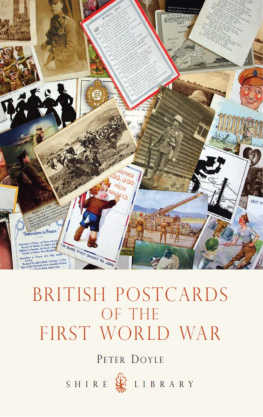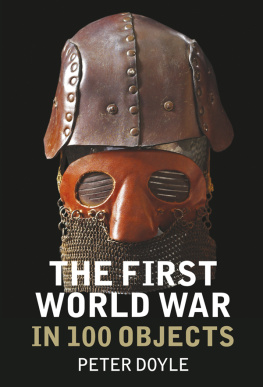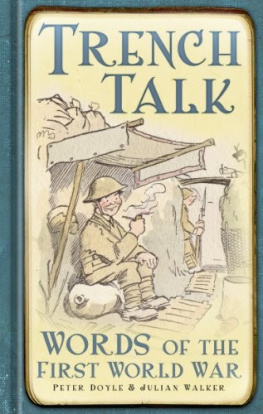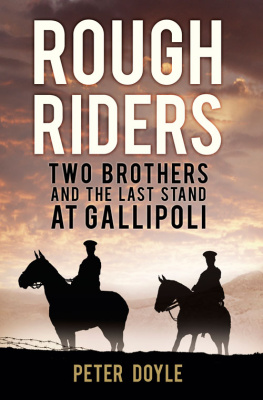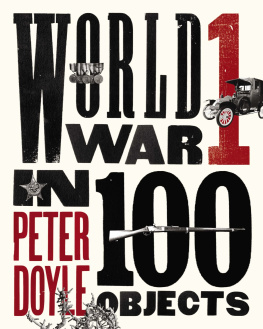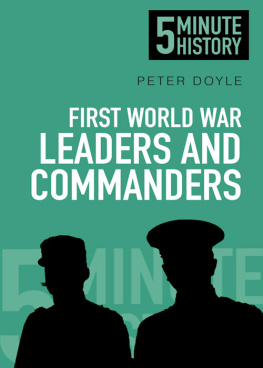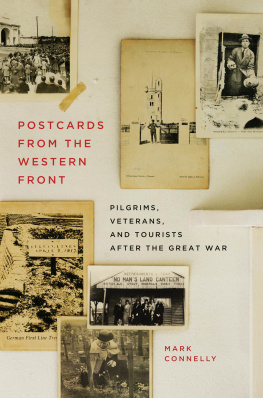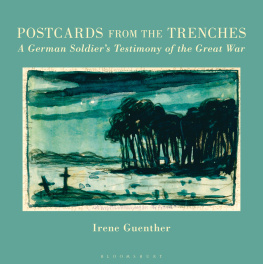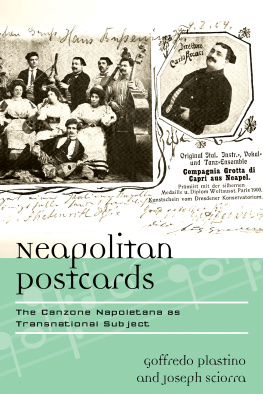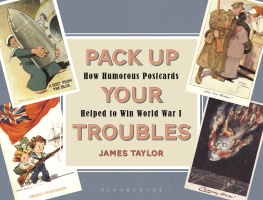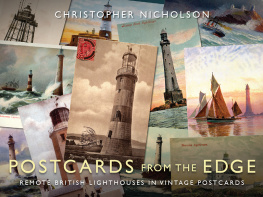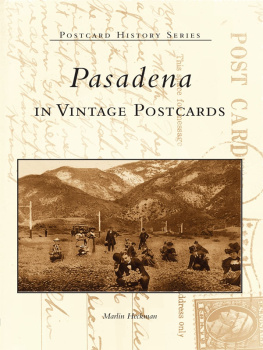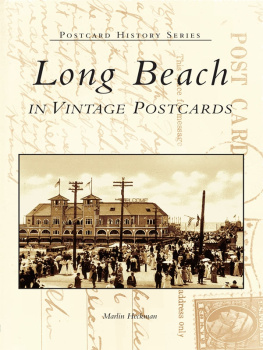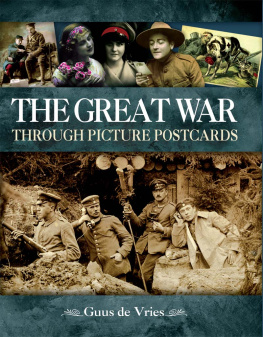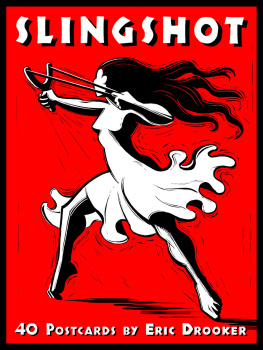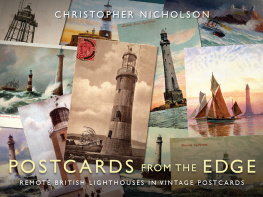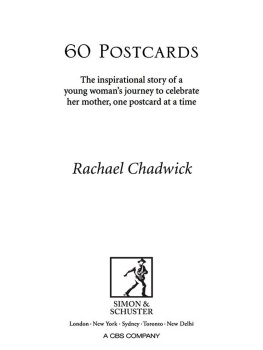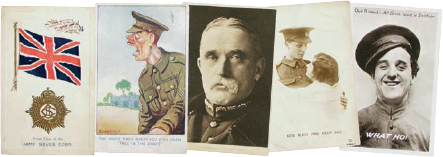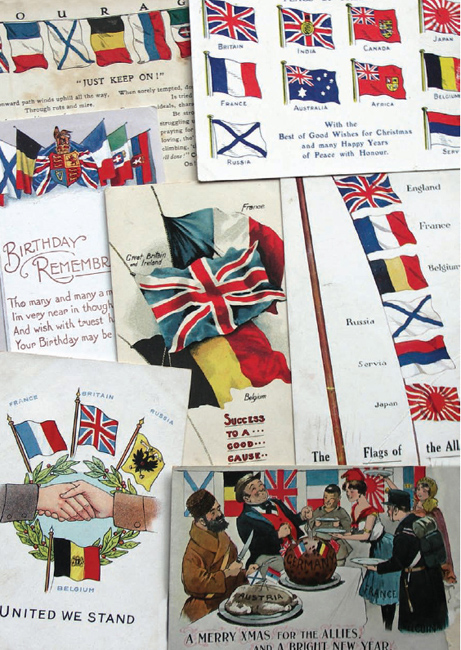BRITISH POSTCARDS
OF THE
FIRST WORLD WAR
Peter Doyle
SHIRE PUBLICATIONS
CONTENTS
THE PICTURE POSTCARD GOES TO WAR
Flag postcards from various publishers, highlighting the flags of the Allies (see pages 89).
F ASCINATING to collectors and social historians alike, postcards of the First World War illustrate many forgotten aspects of the conflict, their images loaded with meaning, their written messages providing insights into the developing machinery of modern warfare. The purpose of this book is to provide a guide to the main themes covered by these contemporary cards.
A study of the postcards of the Great War period provides a microcosm of the war itself, a representation in pictures of the combatants, the nature of war and the feelings of the British people at a signal moment in their history. During the years 191418, at the height of its Golden Age, the postcard was ubiquitous: worldwide in use and popularity. Postcards were sent (and collected avidly) by civilian and soldier alike, and were to cross all social boundaries, from the lowliest private soldier to the loftiest general officer. British postcards of the period differ substantially from those produced by their friends and enemies alike. Less sentimental (though sentimentality is a feature of early war cards), perhaps more understated and gently humorous, tracking the development of the postcard through the war years provides a unique insight into the response of the British people to the horrors of the war.
THE POSTCARD
The postcard had humble beginnings. Born in the Austro-Hungarian Empire in 1869, postcards were at first unglamorous, intent on providing a convenient means of sending short messages through the postal service. Plain and unpretentious, there was no need for separate envelopes and writing paper, sealing wax or any of the other paraphernalia that typified Victorian correspondence. Quick to use and effective at distributing brief messages, the experiment was to spread rapidly across Europe. The simplicity of the concept ensured its success.
Reaching Britain in 1870, the postcard was subject to scrutiny from the Post Office, whose rules had to be continually adjusted throughout the latter part of the nineteenth century to accommodate them. Critical to the success of the experiment was the possibility of posting at half the normal letter rate a halfpenny. Subject to stringent Post Office regulations, to qualify for this rate the postcard was to be composed of a simple card with two essentially blank sides one for the address, the other for the message, emphasising the functionality of its purpose. Postage was already paid; the card had the halfpenny stamp printed upon it by the Post Office, hampering private enterprise. And, as address and message were not to be mixed on the same side (a stipulation that carried with it the penalty of full postage rate if ignored), there was little possibility of any other devices or illustrations being carried on the card.
This bureaucratic battleground meant that the picture postcard took some time to take off in Britain, while from mainland Europe came alluring continental views of mountains and waterfalls, lithographed and in colour, produced at the cutting edge of the reproduction technology of the time. Critical to the success of the postcard was discussion in Parliament of the weighty matter of whether an adhesive stamp could be affixed to a card, thereby permitting other manufacturers other than the Post Office to create them. The break-through came in 1897 when card backs were divided into two halves one for the address (on the right), one for the message (left) with a space top right for the adherence of the stamp. This left the front free for an illustration, and with official approval for stamps finally to be stuck to cards, came the birth of what collectors call The Golden Age of postcards. From 1902 (the delay caused perhaps by the shock of the Post Office sweeping away its former objections) to the introduction of the one-penny rate in 1918, the picture postcard was a runaway success.
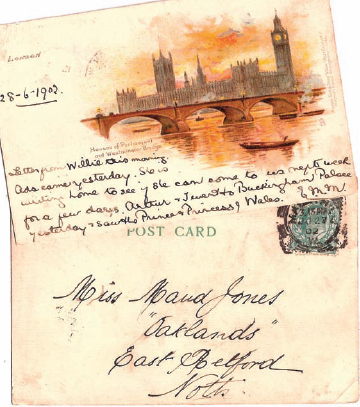
Early picture postcards from 1902. With an undivided back, space was limited for the message, in this case written on the same side as the illustration. Published by Raphael Tuck & Sons.
During their Golden Age, postcards achieved multi-functionality. They were now sent to recipients with the express purpose of adding to their collection, or were bought simply as souvenirs and collected in lavishly produced albums. But they were just as easily ephemeral, used simply to pass on mundane messages about tea engagements and other brief liaisons. The Golden Age of postcards also happens to correspond to the period of sustained warfare that commenced with the largest of Britains Victorian wars, the Second Boer War of 18991902, and which ended with the much larger conflict of 191418. During the Boer War, many publishers (particularly Raphael Tuck & Sons) made their names and the reputations of artists such as R. Caton Woodville and Harry Payne from the depiction of soldiers in colourful uniforms, somewhat different from the actuality of the warfare as prosecuted on the dusty veldt of South Africa.
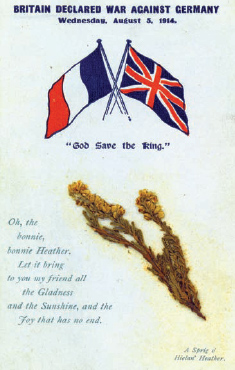
Postcard commemorating the declaration of war in 1914. Sent to America, it is unusual in having a sprig of heather attached, for luck.
Patriotic cards in this manner were also to announce the arrival of the First World War, when the European nations went to war following the tensions that erupted in the Balkans in 1914. With war declared by Austria-Hungary with Serbia on 28 July, the major powers followed in committing to what was to become five years of slaughter; by the Armistice of 11 November 1918, the death toll from a conflict fought on three continents was to reach ten million military deaths, twice that many in total. One in six British families would suffer bereavement.
ALLIES
The postcard war opened with a wave of patriotism. In the summer of 1914 the march to war was rapid. The assassination by Serbian activists of the heir to the Hapsburg Empire, Archduke Franz Ferdinand and his wife Sophie, on the streets of Sarajevo on 28 June is well known as the spark that set Europe alight. The ultimatum to Serbia that followed was to provide the kindling; it was not long before the whole of Europe was ablaze, a consequence of alliances, understandings and secret military plans.
For Britain, it was the loose Entente Cordiale with France in 1904 and another with Russia in 1907 (together with the alliance of France with Russia in 1894) that was to provide the basis of what became known as the Triple Entente. Russia was also aligned with Serbia and Serbias very survival was threatened by Austria-Hungary. The twin-monarchy was allied directly with Germany, the product of a treaty from 1879. Following long-term enmity with France, a nation still brooding from its failure in the Franco-Prussian War of 187071, and the subsequent loss of Alsace-Lorraine, Germany had pre-prepared plans to tackle both France and its ally Russia, if so required. France was to be disposed of first, before dealing with the crushing might available in the vast territory of Russia. The plan, drawn up by Count von Schlieffen, required the neutrality and sovereignty of Belgium to be ignored. When this ponderous plan was enacted on 4 August 1914, Britains direct involvement was assured. The Treaty of London (1839) guaranteed Belgian neutrality; with its borders slighted, and France threatened, Britain was to follow the other powers in declaring war, against Germany and Austria, on 4 August 1914. This treaty was the scrap of paper often referred to in the literature of the day and on postcards. Other allies would follow: Japan, tied by treaty in 1902 to help Britain in time of war, was to be a loyal ally; Italy, swayed by the promise of territorial expansion away from its former German and Austrian allies, was to join in 1915. The USA would follow in 1917, following the loss of the

